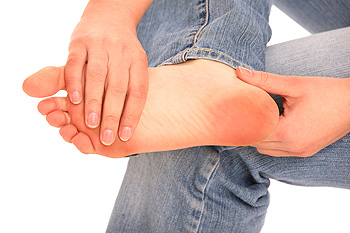Sesamoiditis is a painful condition that affects the sesamoid bones and is typically caused by frequent pressure. This condition typically causes irritation and painful inflammation of the surrounding tissues. There are various factors that influence the development of sesamoiditis. These include having a higher or flattened arch, frequently wearing high heels, increased body weight, frequently participating in high impact sports, running with focus on the forefoot, and arthritis. While typically there isn’t any bruising or discoloration associated with this condition, the sesamoid bones are very sensitive, so a key indicator would be inflammation or swelling, and can be diagnosed by the use of X-rays. For more information about sesamoiditis, we recommend you consult with a podiatrist for a proper diagnosis and advised treatment plan.
Sesamoiditis is an unpleasant foot condition characterized by pain in the balls of the feet. If you think you’re struggling with sesamoiditis, contact one of our podiatrists of New York Foot and Ankle. Our doctors will treat your condition thoroughly and effectively.
Sesamoiditis
Sesamoiditis is a condition of the foot that affects the ball of the foot. It is more common in younger people than it is in older people. It can also occur with people who have begun a new exercise program, since their bodies are adjusting to the new physical regimen. Pain may also be caused by the inflammation of tendons surrounding the bones. It is important to seek treatment in its early stages because if you ignore the pain, this condition can lead to more serious problems such as severe irritation and bone fractures.
Causes of Sesamoiditis
- Sudden increase in activity
- Increase in physically strenuous movement without a proper warm up or build up
- Foot structure: those who have smaller, bonier feet or those with a high arch may be more susceptible
Treatment for sesamoiditis is non-invasive and simple. Doctors may recommend a strict rest period where the patient forgoes most physical activity. This will help give the patient time to heal their feet through limited activity. For serious cases, it is best to speak with your doctor to determine a treatment option that will help your specific needs.
If you have any questions please feel free to contact one of our offices located in Franklin Square, Bethpage, Bronx, and Brooklyn, NY. We offer the newest diagnostic and treatment technologies for all your foot and ankle needs.
Read more about Sesamoiditis
